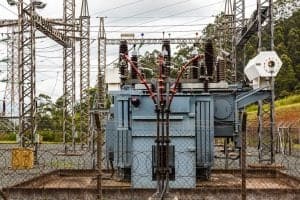
The smart power substations will fit between smart control rooms and smart chargers, allowing UK Power to control and optimize each component of energy delivery.
As the UK pursues its goal of Net Zero carbon emissions by 2050, a new smart power substation design aided by 5G connectivity could help save over 63,000 tons of CO2 by offering more efficiency than traditional substations.
Balancing UK power needs with climate change
UK Power Networks provides power to over eight million homes and businesses in England. Its Constellation Project trial uses Vconnect computers in electricity substations. They’ll communicate in real time, providing more efficient power delivery.
Leveraging 5G brings more efficiency and reduces costs associated with maintaining these substations. It will eventually replace older technologies with this newest substation trial leading the way. Other technology partners such as Siemens and General Electric will also play a part in building and adding software the substation can use for further capabilities.
See also: NIST Smart Grid Framework Update Focus is Interoperability
Initial testing begins on smart power substations
The project trial will test multiple locations using the new type of substation in areas of Southeast England as well as the University of Strathclyde’s Power Networks Demonstration Centre. The team hopes that substations will perform well and help reduce the impact on climate change as the need for power grows alongside population numbers.
The substations will fit into the puzzle between smart control rooms and smart chargers, allowing UK Power to control and optimize each component of energy delivery. 5G enables on-device processing and reduces latency in communication, allowing devices to connect in power and processing efficient ways not previously possible.
The partnership is part of the UK’s climate change initiatives and will provide one more step towards the goal of clean energy. If the Constellation Project is successful, it could signal an era of optimized power grids capable of responding to a dynamically changing electricity grid that will include renewable energy and electric vehicle charging.



























